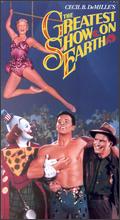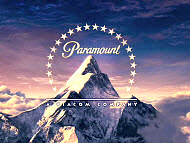The Greatest Show on Earth
Reviewed by: Brett Willis
CONTRIBUTOR
| Moral Rating: | Average |
| Moviemaking Quality: |
|
| Primary Audience: | Preteen to Adult |
| Genre: | Drama |
| Length: | 2 hr. 29 min. |
| Year of Release: | 1952 |
| USA Release: |

| Featuring |
|---|
| Betty Hutton, Cornel Wilde, Charlton Heston, Dorothy Lamour, Gloria Grahame, Jimmy Stewart |
| Director |
|
Cecil B. DeMille |
| Producer |
| Cecil B. DeMille |
| Distributor |
This extravagant Best-picture Oscar-winner showcases many performers from the real Ringling Bros. and Barnum and Bailey circus; fifty-seven acts are named in a partial list in the opening credits. At the same time, it weaves several mature plotlines including implied seduction, romantic jealousy, crooked midway operators, and even murderers; so it’s not as family-friendly as it could have been.
Trapeze artist Holly (Betty Hutton) has worked hard to perfect her act and get into the Center Ring. But the 1950s and television are the beginning of the end of the big circuses; and in order to persuade the Ringling front office to play a full season including the smaller towns, the show’s “boss man” Brad Braden (Charlton Heston) has been forced to hire The Great Sebastian (Cornel Wilde) and bump sometime girlfriend Holly back into Ring One. Sebastian is a known womanizer and general troublemaker, but he draws crowds.
Hutton is thoroughly enjoyable in her role. Although Heston is third-billed, his righteous tough-guy character helped pave the way for his later roles in “The Ten Commandments” and “Ben-Hur”.
Content Warnings
A large part of the storyline involves performers stealing each other’s boyfriends and girlfriends, which sometimes leads to violence or other foolish behavior. Without giving everything away, let’s just say that there’s (hopefully) more trouble here than in your average real-life circus. We do see that actions have consequences. There are a few profanity substitutes like “Judas Priest.”
Those who love circuses and circus history will find a gold mine here. From the opening scene where Lou Jacobs and Emmett Kelly are seen alongside the fictitious clown Buttons (Jimmy Stewart), the film is full of circus stars doing their stuff. Fictitious trapeze artists Holly and Sebastian are created by a combination of “stand-ins” (real-life performers), wires, and blue-screen effects. We also see the hard work of the non-performer staff in repeatedly setting up the show, taking it down, and loading it on railroad cars. An added piece of fun is watching for film stars like Bob Hope and Bing Crosby doing cameos as spectators. John Ringling North played himself, and also served as the film’s technical advisor.
Of particular interest is the “sawdust-in-the-blood” mindset of Braden and several others that The Show Must Go On regardless of any setback or any personal problems in the lives of the performers. Just when we think we’ve seen how deeply they hold that conviction, the closing scenes ratchet it up another notch. It would be nice if all Christians felt that way about the Gospel.
Due to the financial overhead (and to decreased attendance thanks to TV and air-conditioning), it’s almost impossible to field a travelling circus the size and quality of the Ringling Bros./Barnum and Bailey show in its heyday. But the Ringling Bros. circus and many smaller shows still exist. There are also some fixed-location “Circuses” where high-quality Big Top acts can be seen (such as Circus World Museum in Baraboo, Wis., on the grounds of the old Ringling Winter Quarters).



My Ratings: [Good / 5]